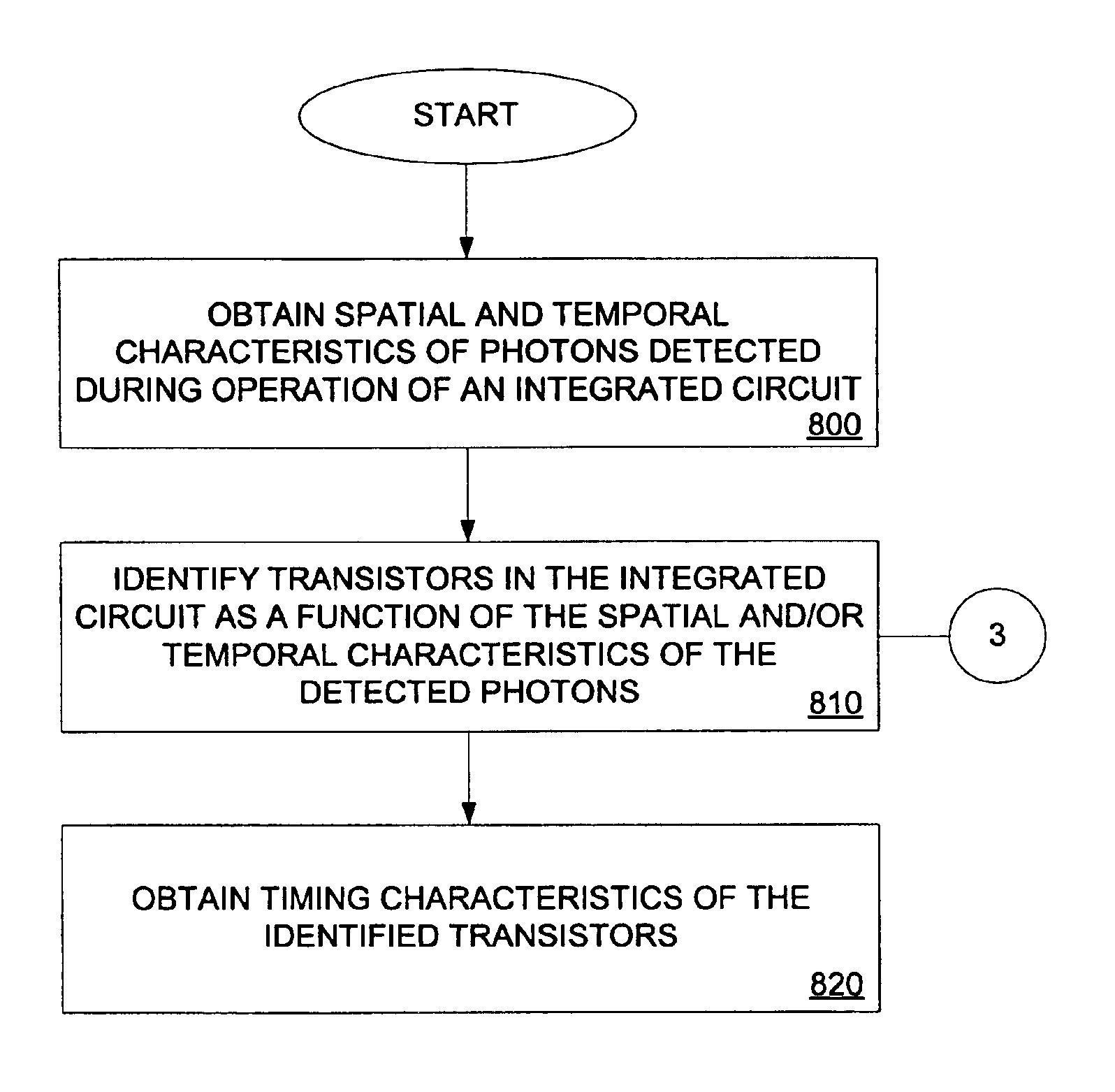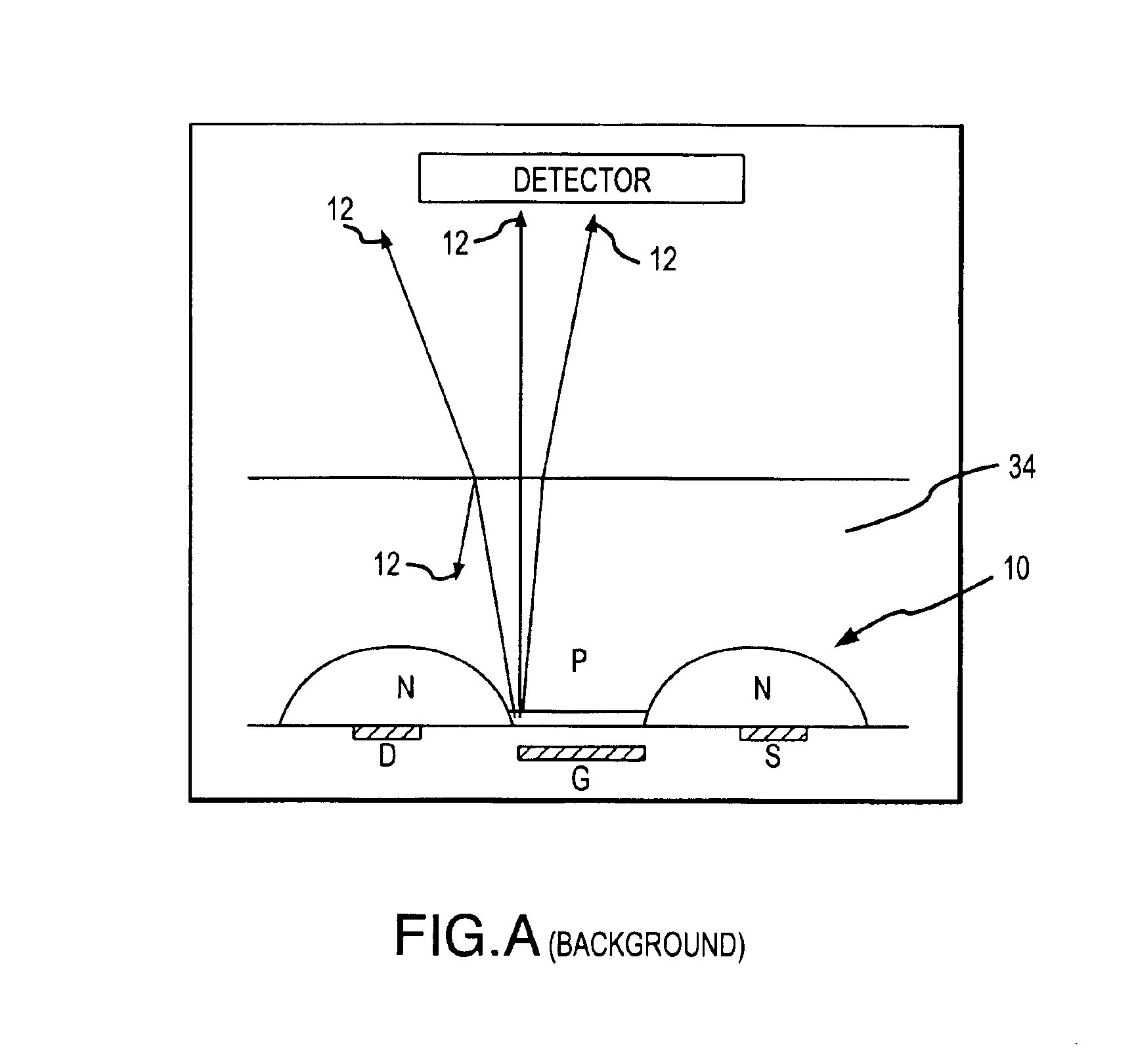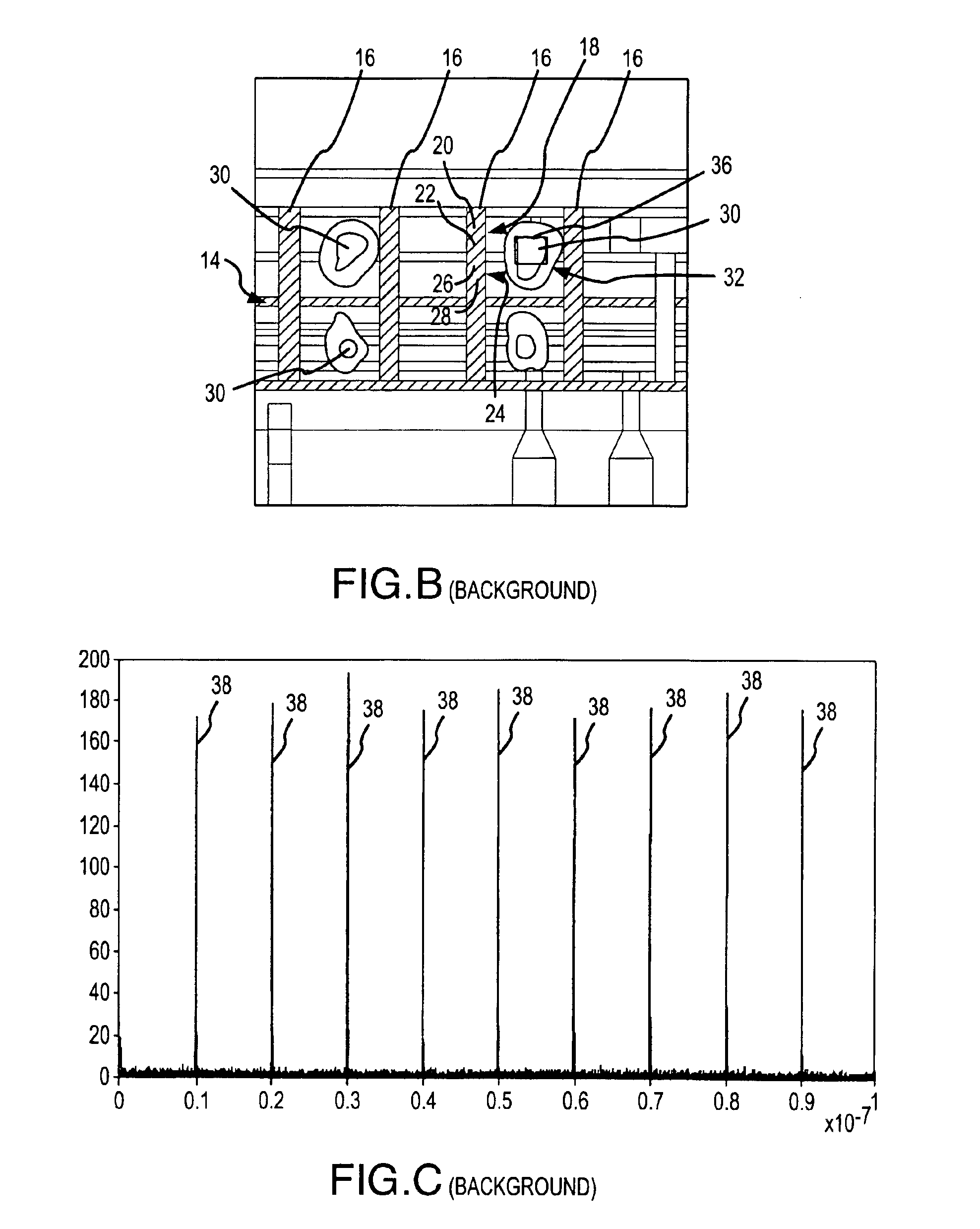Apparatus and method for detecting photon emissions from transistors
a transistor and photon emission technology, applied in the direction of electronic circuit testing, measurement devices, instruments, etc., can solve the problems of difficult or impossible to physically test such small discrete elements of an ic, poor quantum efficiency of the available pmt detectors in the near infrared spectrum, and difficult to perform physical probing of the ic. easy to achieve the effect of reducing the time required, rapidly detecting the difference between photons emitted, and rapid extraction of transistor timing information
- Summary
- Abstract
- Description
- Claims
- Application Information
AI Technical Summary
Benefits of technology
Problems solved by technology
Method used
Image
Examples
Embodiment Construction
[0054]The present invention involves apparatuses and methods for analyzing photon emissions from an integrated circuit (IC) to identify transistors and extract timing information. Implementations of the present invention process photon emission data to rapidly discriminate between photons emitted by a transistor and photons attributable to background emissions. Generally, various aspects of the invention involve the correlation, grouping, or association of photons that have the same or similar spatial, temporal, spatial and temporal and other characteristics to discriminate between photons emitted from a transistor and randomly distributed background photon emissions. The discrimination between transistor photon emissions and background photon emissions can be used to identify a likelihood that photons were emitted from a transistor, identify a single transistor, identify many transistors in an entire IC or a portion of an IC, and extract timing information for the transistor or tra...
PUM
 Login to View More
Login to View More Abstract
Description
Claims
Application Information
 Login to View More
Login to View More - R&D
- Intellectual Property
- Life Sciences
- Materials
- Tech Scout
- Unparalleled Data Quality
- Higher Quality Content
- 60% Fewer Hallucinations
Browse by: Latest US Patents, China's latest patents, Technical Efficacy Thesaurus, Application Domain, Technology Topic, Popular Technical Reports.
© 2025 PatSnap. All rights reserved.Legal|Privacy policy|Modern Slavery Act Transparency Statement|Sitemap|About US| Contact US: help@patsnap.com



